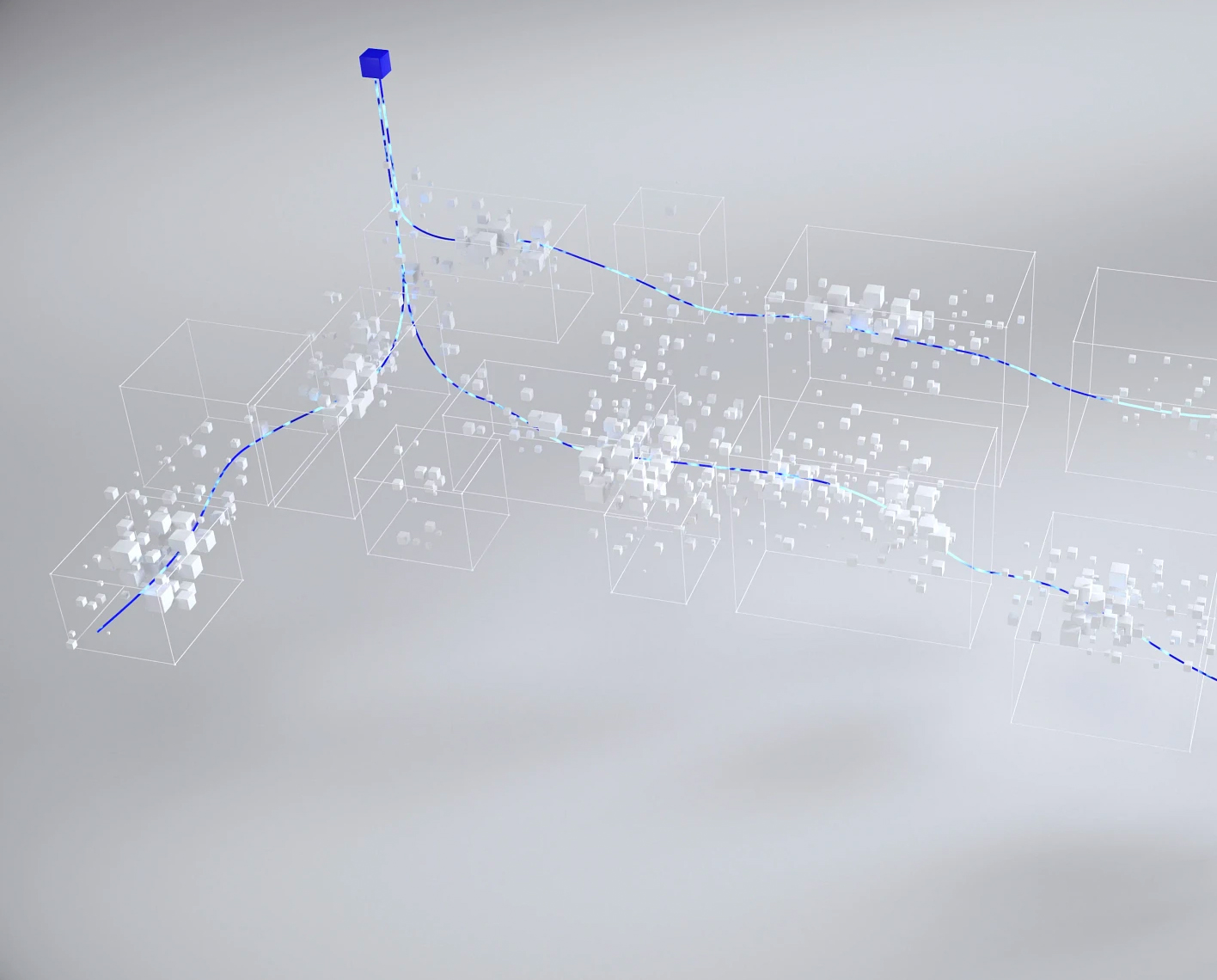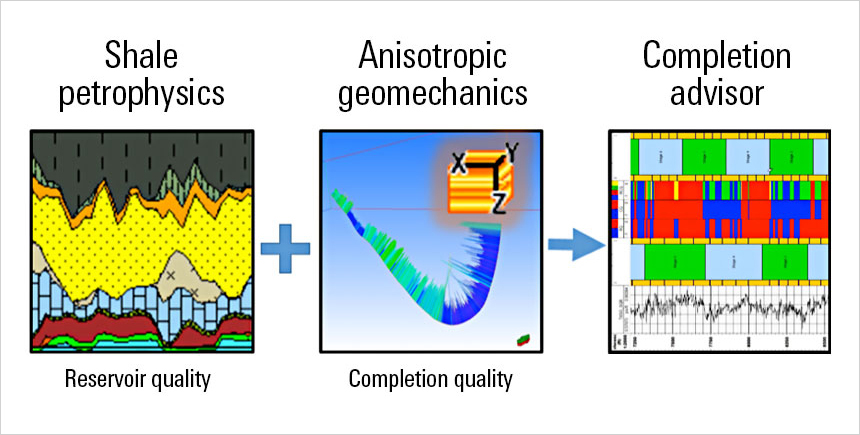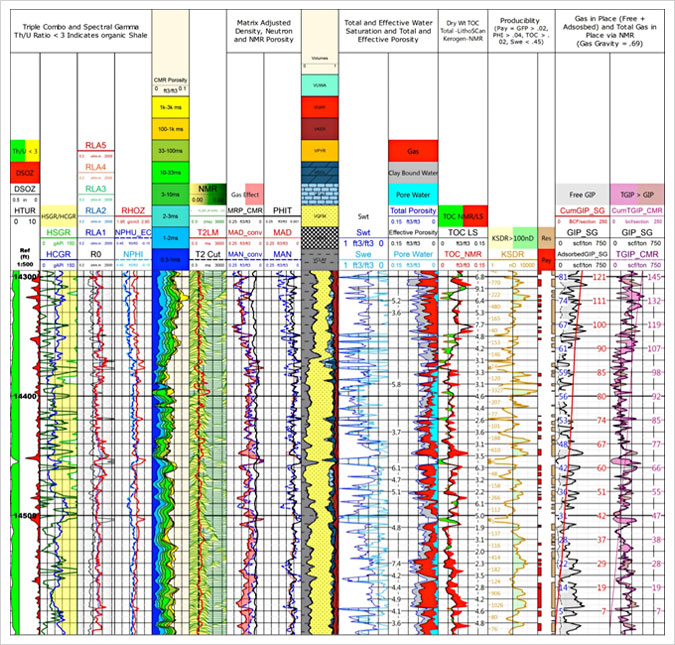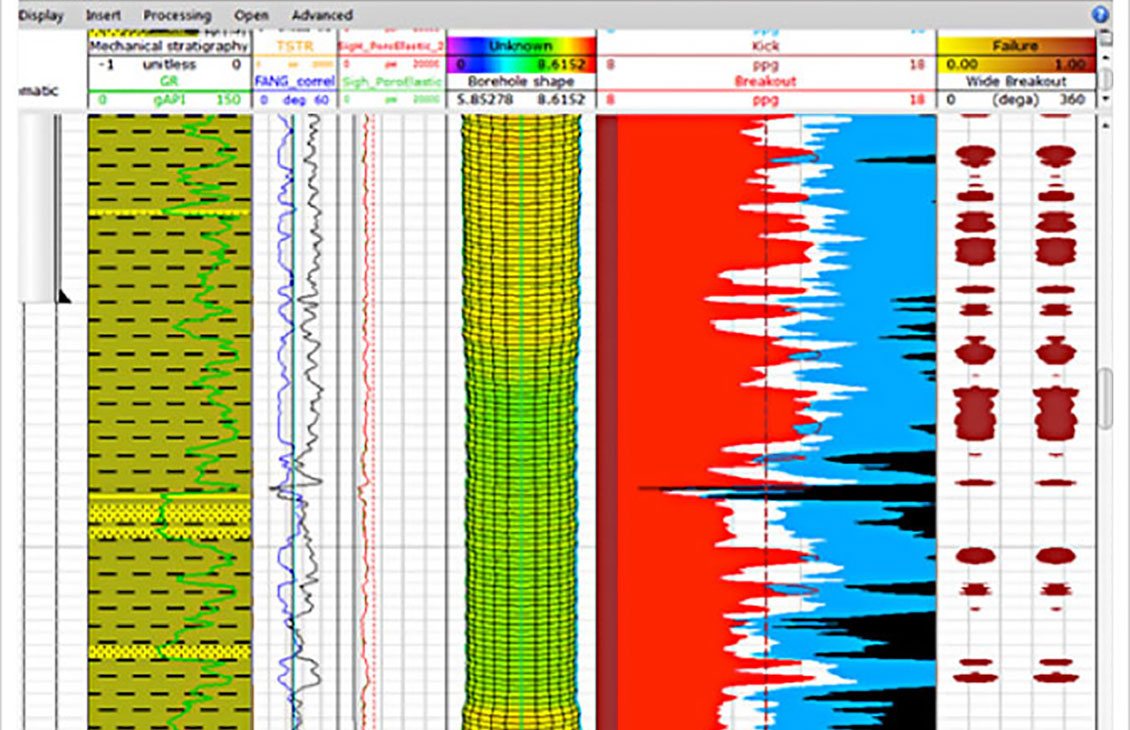Techlog Unconventionals

Understanding lithology is key to evaluating shale plays because it directly influences the porosity distribution in the rock and the geomechanical properties of the formation.
Model shale petrophysics
Understanding lithology is key to evaluating shale plays because it directly influences the porosity distribution in the rock and the geomechanical properties of the formation. The Techlog Shale petrophysics workflow empowers you to work with the data you have, such as a triple-combo, advanced spectroscopy, or nuclear magnetic resonance logs. Using this information, you can build rapid, robust models that explain complex mineralogy, porosity, and fluids present in the formation.
Predict hydrocarbon volumes
Techlog Shale enables you to estimate the hydrocarbon volumes in place for gas, condensates, or oil at reservoir conditions—computing both free and adsorbed gas fractions. Core-derived isotherms from many shale plays are integrated into the module for adsorbed gas computation, with the ability to input local data when available.
Stimulate using local stresses
When completing the well and planning stimulation stages or perforations, the far-field stresses need to be factored in to ensure the completion is placed in the most appropriate stress area. The anisotropic geomechanics tool calculates the mechanical properties and horizontal stresses in layered rock that can be used alongside reservoir quality information for optimal completion planning.
- The Techlog Shale petrophysics workflow empowers you to work with the data you have
- Techlog Shale enables you to estimate the hydrocarbon volumes in place for gas, condensates, or oil at reservoir conditions—computing both free and adsorbed gas fractions.
You can build rapid, robust models that explain complex mineralogy, porosity, and fluids present in the formation.
Core-derived isotherms from many shale plays are integrated into the module for adsorbed gas computation
The anisotropic geomechanics tool calculates the mechanical properties and horizontal stresses in layered rock

NExT Techlog training courses
NExT offers a comprehensive training program to support users of the SLB software, plugins, and other software products.



